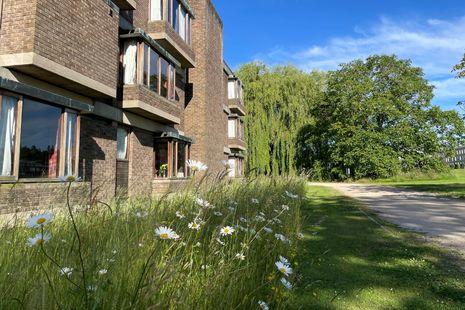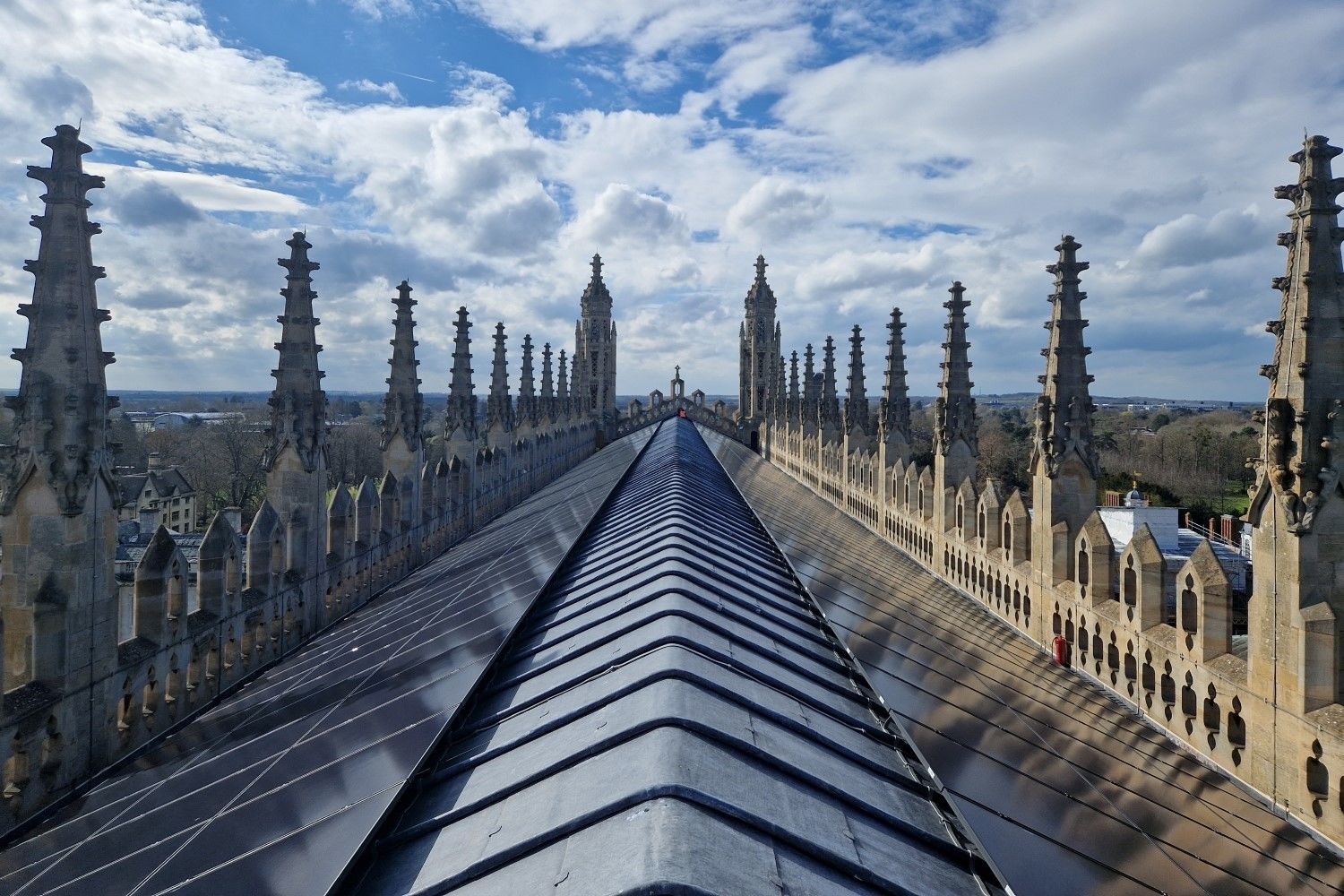Cambridge’s inaugural climate ideathon took place earlier this year in March – organised by students Priya, Belle and Amelie – the event proposed to be wholly different from other climate sustainability events, hoping to tackle problems raised by University staff, with the intention of setting up productive dialogue between them: “We came up with the idea of it being an ideathon […] where we would come up with solutions, rather than oppose or come up with problems.”
Teams were tasked with presenting solutions to a list of sustainability issues the University is facing drawn up by staff. They were: reducing the energy consumption of empty rooms, reducing the amount of meat sold by the University Catering Service, finding a safe way to dispose sustainably of single use gloves in laboratories, increasing the tree canopy cover in Cambridge, securing sustainable research funding, and reducing the environmental impact of conferences. The solutions were innovative, and well received – with students offered the opportunity to follow up with staff of their proposal’s implementation.
One student, Tom Buick, a second year at Clare, spoke enthusiastically about his solution to the ever controversial issue of making food more sustainable – known in its various guises, as meat-free-monday, or vegan formals, or an effort by overly eco-zealous students on JCRs to force their peers to eat subpar vegetarian food. His team’s proposal focused not on compulsion, which is too often met with resistance, but subtle encouragement. He said, “We really don’t want ‘no meat,’ that is going to scare people off […] we want people to make these small changes, at least to start with, so we can say that it’s not that hard.” It offered hope for a solution to a problem that saw students disrupt a formal at Selwyn in March to demand more sustainable catering.
“we want people to make these small changes, at least to start with, so we can say that it’s not that hard.”
Will Crook, from Cambridge Zero, who was present at the event, said, “I think it’s so important to hear young people’s voices represented […] there should be more spaces going forward for the students to talk on climate issues.” The event marked an attempt at student engagement in the University’s ongoing mission to decarbonise its activities, an issue over which students and the University have often clashed. A fixture on the Varsity headlines of recent years has been frequent protests against perceived environmentally unfriendly practices by Cambridge and its colleges.
Cambridge’s environmental impact is large – from emissions, both direct and indirect, to the pressure it places on limited water supplies. Its goals are ambitious – to reduce emissions of scope one (those it emits directly) and two (from its purchase of electricity) to absolute zero by 2048, amongst a number of other commitments, such as eliminating waste sent to landfill.
However, student groups say it is not moving fast enough. It places 100 out 149 in the People and Planet University League for sustainability at UK universities. Cambridge Climate Justice, a student group campaigning for the University to reduce its environmental impact said that, while they found reductions in scope one and two emissions “encouraging,” they feared not enough was being done with regards to scope three emissions – which are those indirectly related to its activities, occuring on its value chain, and are the greatest of the three in quantity. Significant scope three emissions are generated by conference delegates flying in and out of Cambridge. This was an issue encountered at the ideathon, yet the group assigned the problem (despite winning the overall prize) struggled to find a way to reduce this.
“Significant scope three emissions are generated by conference delegates flying in and out of Cambridge.”
Colleges, too, have been under scrutiny. The Climate League of Oxford and Cambridge (CLOC), is a student-led initiative that seeks to score Oxbridge colleges based on their commitment to sustainability. Its committee spoke to Varsity, claiming that “students at colleges such as Selwyn, Murray Edwards, Fitzwilliam and St Edmunds, have used CLOC to call for just and effective climate action”.

They said that, “whilst most colleges are trying to reduce their environmental impact, these efforts are often not transparent nor quantifiable”. Churchill proves a college which bucks this trend – they have put out an ambitious plan for decarbonisation. The College’s master, Professor Sharon Peacock, fellow Dame Polly Courtice and estates and operations director, David Prinsep spoke to Varsity about their efforts to become more sustainable. With 70% of their fellowship being in STEM disciplines, Courtice said, “one of the fantastic things about Churchill when it’s focusing on sustainability is just how much academic knowledge we have to draw.”
In order to achieve its ambitious target for decarbonising its energy usage, Prinsep explained, “we’ve identified, for example, several of the properties on Storey’s Way that were highly dependent on gas and we’ve looked to take gas out of those properties and move to an air source, heat pump approach,” which he combined with “EnerPHit principles – through that we’ve looked at air tightness, windows, wall insulation, floor-ceiling insulation.” He said, “with the two we’ve done [refurbished] most recently, 70 and 72 Storey’s Way, we’ve seen reductions of about 65-70% in energy consumption.”
“with the two we’ve done [refurbished] most recently, 70 and 72 Storey’s Way, we’ve seen reductions of about 65-70% in energy consumption.”
Prinsep also highlighted Churchill’s efforts to manage its waste sustainably, an area the University itself has made major progress in – reducing its quantity of waste sent to landfill from 2,000 tonnes in 2012-13 to less than 250 in 2022-23. He said, “we have compactors on site which squash all the rubbish down … [and] reduce the number of vehicle movements by 76%.”
Cambridge’s colleges are known for their large estates, often with substantial urban green space, and Prinsep and Peacock emphasised the sustainable management of Churchill’s. Peacock said, “we have about a thousand trees now, and when the land was bought there were very few trees.” Prinsep added, “we have got about 5 acres dedicated to wildflower meadows, we’re also experimenting with sustainable drainage systems wildflower turf to try and help with drainage across the site.” Managing its estates sustainably is not just good for biodiversity, it also allows Churchill to reduce its water consumption – particularly crucial in a water-scarce city like Cambridge.
Churchill is a testament, therefore, to the steps that can be taken by both colleges and the central university to reduce the environmental impact of their activities – whether emissions from gas and purchasing electricity, the management of waste, or the use of water. Important, too, was the involvement of students. Courtice said, “the inclusion of our student body on all of our committees is really important so that we hear their voice.”
“the University and many colleges continue to bank with Barclays, one of the largest financiers of fossil fuels and arms globally,”
Yet the University’s record on sustainability has also been under intense scrutiny from another angle – that of its investments in, and commitment to, divestment from fossil fuels.
CCJ criticised the fact that, “the University and many colleges continue to bank with Barclays, one of the largest financiers of fossil fuels and arms globally,” calling for it to make a stronger effort to divest from indirect investments.
They continued, “The University is still happy to accept fossil fuel funding for research.” Cambridge’s research donation policy, updated last year, forbids accepting funds from fossil fuel companies in most cases, but permits a number of “exceptional circumstances” in which they may be taken – including for particularly large donations, or those which cannot be secured from other means. CCJ argued, “a full ban on donations would demonstrate a much stronger commitment to remove the influence of fossil fuel companies both within academia and globally.”
Regarding college endowments, the CLOC committee argued that there was considerably more progress that needed to be made – with a number of colleges, including Corpus Christi, Magdalene and Trinity – having no publicly available policy on the matter. 20 colleges have fully divested from direct investments in fossil fuels, according to the University’s most recent sustainability report.
The CLOC committee said that their ambition was to, “support much deeper engagement between different colleges and their staff and student bodies.” Whilst the table has drawn criticism by colleges who doubt its methods, the ideathon is evidence that student involvement is increasingly taking a front-seat in the University’s progress towards decarbonisation. If Cambridge is going to reach a sustainable future, dialogue with its students will be crucial.


